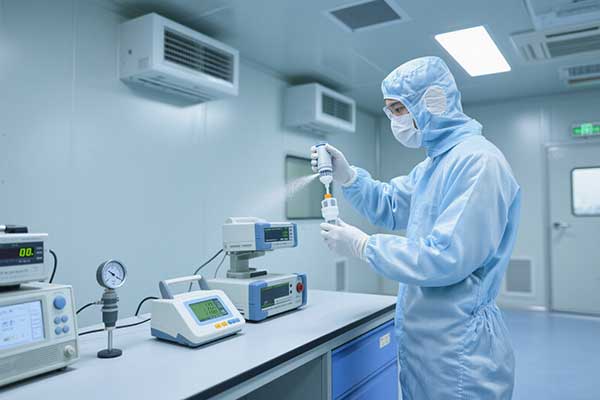Standard Operating Procedures
1. Purpose
To establish a standard operating procedure for sedimentation detection to standardize the Detection operation of employees.
2. Scope
Applicable to the detection of sedimentation bacteria in the company's internal production clean area.
3. Responsibility
The production department, production workshop, quality management department, QC inspection room director, and inspectors are responsible for the implementation of this procedure.
4. Testing Basis
YY/T0188.6-1995 Drug Inspection Operation Procedure, Part 6, Drug Bioassay.
5. Content
5.1 Equipment
High Pressure Sterilizer
Used for sterilization of equipment
Constant Temperature Incubator
For culturing samples
5.2 Culture Medium and Plate Preparation
- Culture dish: Generally use 490mmx15mm borosilicate glass culture dish
- Culture medium: Generally uses ordinary broth agar culture medium or other culture medium approved by the pharmacopoeia
- Place the culture dish in 121℃ wet heat sterilization for 20 minutes or dry heat sterilization at 180℃ for 2 hours
- Heat the culture medium to melt, and when it cools to 45℃, inject the culture medium into the culture dish under the requirements of sterile operation, about 15ml per dish
- After the agar is dissolved, invert the culture medium plane in a constant temperature incubator at 30~35℃ for 48 hours
- The prepared culture medium plane should be stored in an environment of 2~8℃
5.3 Sampling Points
- The arrangement of sampling points should be uniform to avoid excessive concentration in a certain local area
- According to the size of the clean area, the minimum number of sampling points should be formulated
- The location of the sampling point in the working area is about 0.8m~1.5m from the ground
Add sampling points at key equipment or key work activity range

Test Standards
Static Standards for Clean Area Microbial monitoring
| Level | sedimentation bacteria (90mm) cfu/0.5hour | Frequency |
|---|---|---|
| 100 level | ≤1 | 1 time/month |
| 10000 level | ≤3 | 1 time/month |
| 100000 level | ≤10 | 1 time/month |
Dynamic Standards for Clean Area Microbial monitoring
| Level | Sedimentation Bacteria (90mm) cfu/0.5hour | Frequency | Surface Microorganisms Contact Plate (55mm) cfu/plate | 5-finger Gloves cfu/gloves | Frequency |
|---|---|---|---|---|---|
| 100 level | ≤1 | 1 time/day | <1 | <1 | 1 time/shift |
| 10000 level | ≤3 | 1 time/day | - | - | - |
| 100000 level | ≤10 | 1 time/week | - | - | - |
5.4 Test Rules
a. Test Status
- Before the test, temperature and humidity must meet requirements, static pressure difference, Ventilation frequency, and air flow rate must be controlled
- The clean room must be disinfected before testing
- Two test states: static and dynamic
- Static test: clean room purification and Air conditioning system in normal operation
- Dynamic test: clean room in normal production
b. Testers
- Testers must wear work clothes that meet the environmental cleanliness level
- Static test: all equipment installed but not running, max 2 testers
- Test time for unidirectional flow (e.g., Class 100): at least 10 minutes after system operation
- Test time for non-unidirectional flow (e.g., class 10000/100000): at least 30 minutes after system operation
- Dynamic testing: equipment operates as planned with specified operators
c. Test Steps
- Sampling: Place culture dish according to sampling point layout, open cover for 0.5 hours, then cover and turn upside down
- Culture: Place upside down in incubator at 30~35℃ for at least 48 hours
- Colony counting: Count with naked eye, mark on colony counter, verify with magnifying glass
5.5 Notes
- Test equipment must be sterilized to ensure reliability
- Prevent human contamination of samples
- Record culture medium, conditions, and parameters
- Use transmitted light for counting, don't miss edge colonies
- Inspect each culture dish quality before sampling
5.6 Result Calculation
M - average colony count
M1 - colony count of culture dish No. 1
M2 - colony count of culture dish No. 2
Mn - colony count of culture dish No. n
n - total number of culture dishes
5.7 Result Evaluation
- Use the average colony count to judge the microorganisms in the air
- The average colony count must be lower than the selected evaluation standard
- If exceeding standard, disinfect and resample twice; results must be qualified
5.8 Records
- Record room temperature, Relative humidity, pressure difference and test status
- Record book should be kept for two years after last record
- Archive location must be indicated in the record book
Issuing Department
General Office
Distributed to
Vice President of Quality
Quality Management Department
QC Inspection Room
General Office
Cleanroom Sedimentation bacteria detection Standard Operating Procedures © 2024
 +86 18186671616
+86 18186671616 Jason@cleanroomequips.com
Jason@cleanroomequips.com
 MENU
MENU



